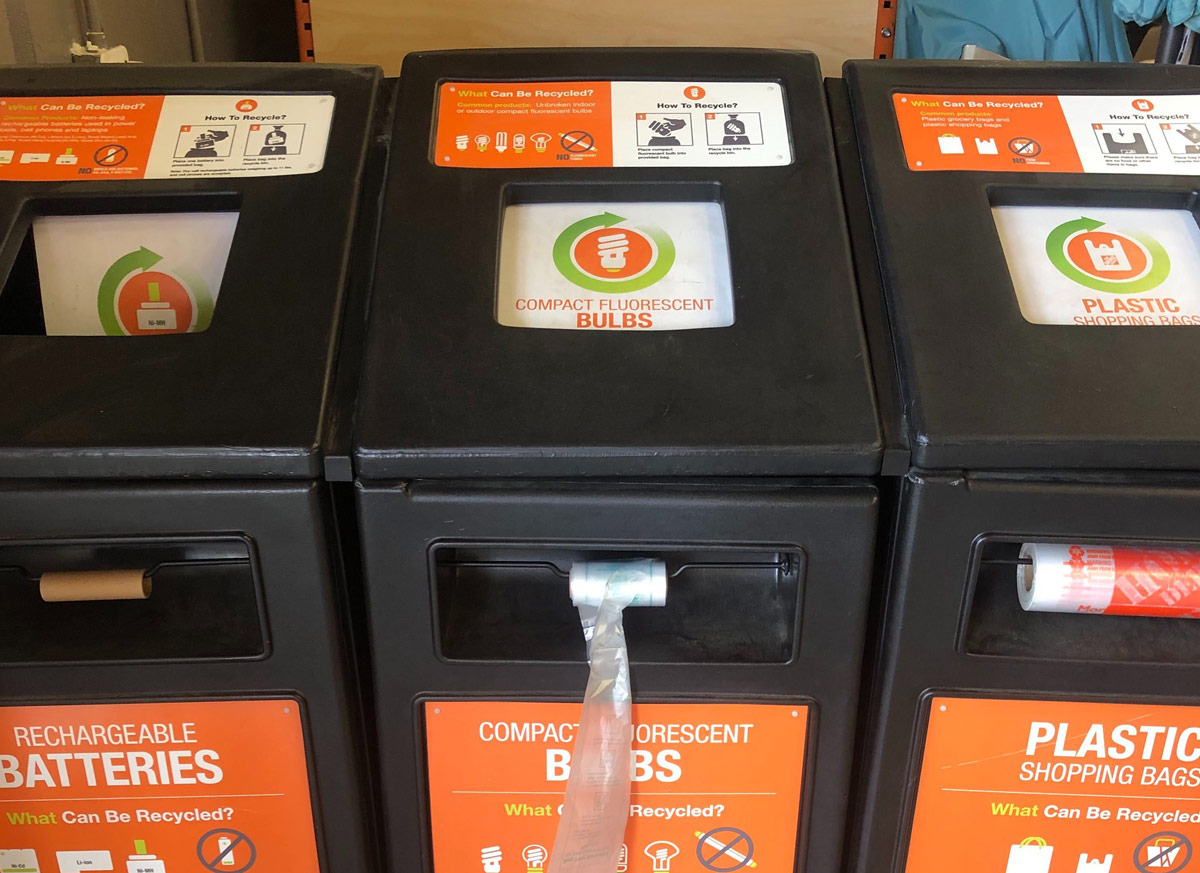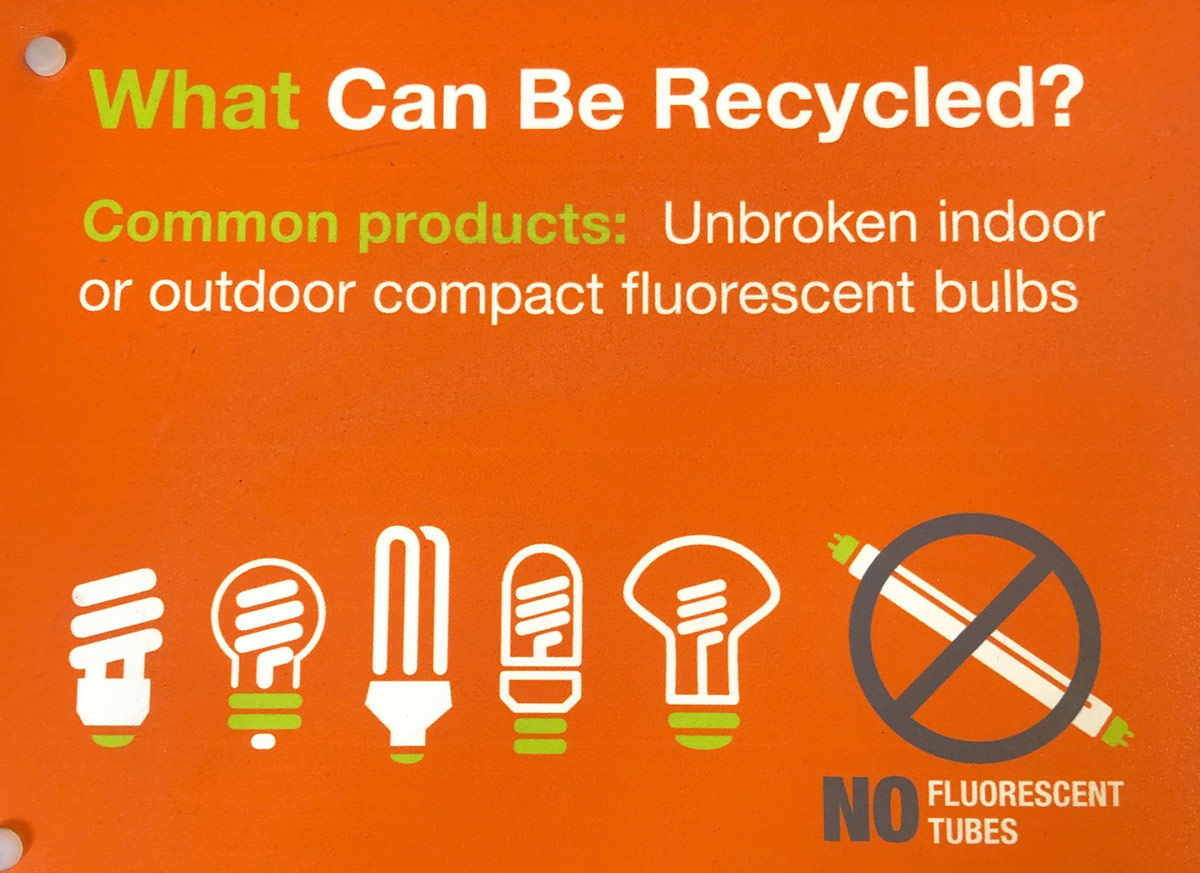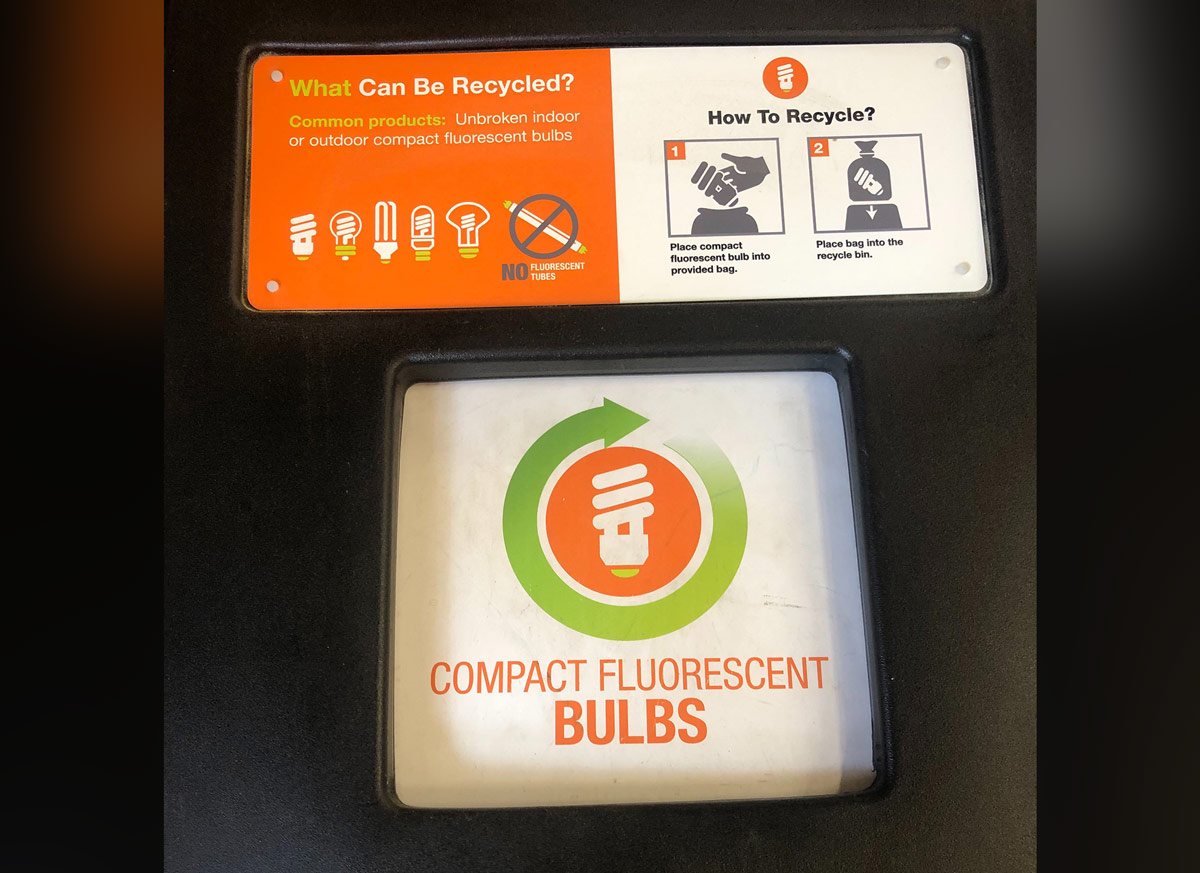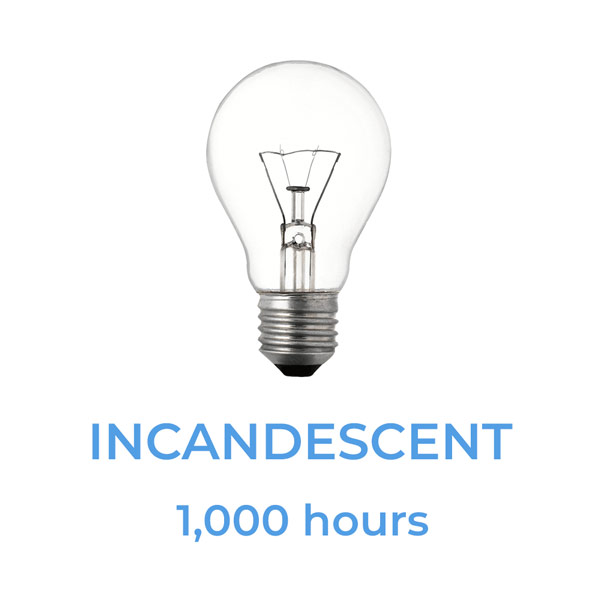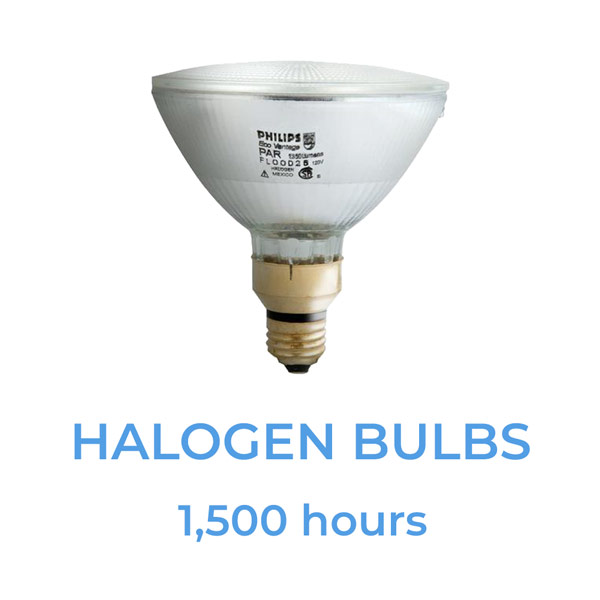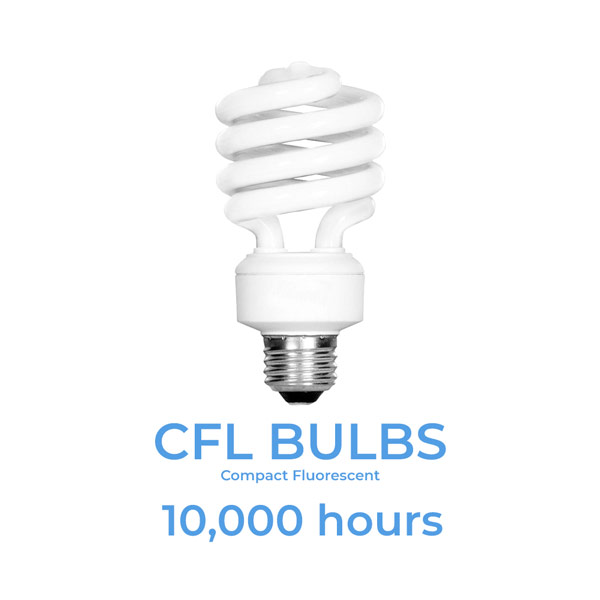CFL Bulb Recycling
15 Days of Green Tips for 15 years of Keep Carroll Beautiful
Day 2 – Recycling your CFL bulbs with Hannah Smith
This post is a part of the “15 Days of Green Tips for 15 years of Keep Carroll Beautiful” Virtual Birthday Celebration. Every day between April 8 and April 22, a member of KCB Board, Staff, or the public, will share their favorite tips on how to Reuse, Reduce, and Recycle!
Hannah Smith is Keep Carroll Beautiful Board Member and an Environmental Specialist with the Southwire Company. Hannah assists Southwire’s Sustainability Goals by expanding the Electronics Recycling Event that started in Carrollton to all of Southwire’s operational locations across the United States, Canada, and Mexico. “One of my favorite parts about these events is seeing each community come together as good stewards of the environment.”
How many environmental specialists does it take to change a light bulb?
None. Environmental specialists replace only dark bulbs.
Where to take your CFLs
Hannah wants you to know recycling CFL bulbs is easy: “You can take your CFLs to any HomeDepot or Lowes store. Contactless drop off boxes are typically set up right by the front door and plastic bags are provided for individual bulbs to contain any particles if the bulbs break during transport. In addition to collecting used CFLs, most stores also provide rechargeable battery and plastic bag drop off. “
For Carroll County CFL Drop-Off locations please visit How do I recycle…?.
How did the hipster burn his hand?
He changed the lightbulb before it was cool.
Types of light bulbs
So what are the common types of bulbs? Household bulbs are typically limited to just a handful of types of bulbs. Halogen bulbs were commonly used outdoors while incandescent bulbs were the most popular indoor type. With the introduction of versatile, high-efficiency bulbs like CFLs and LEDs, incandescent and halogen lamps are becoming a thing of the past.
Compact Fluorescent (CFL)
- CFL bulbs have an average life span of 10,000 hours.
- CFLs use up to 75% less energy use than incandescent bulbs.
- Compact Fluorescent bulbs have low operating costs, high upfront costs.
- CFLs give off cool or warm white light.
Quartz Halogen
- Halogen bulbs have an average life span of 1,500-hours.
- Halogen bulbs use up to 15% less energy use than incandescent bulbs.
- Halogen light bulbs have high operating costs, low upfront costs.
- Halogen lamps give off warm light – good for entryways.
Incandescent
- Incandescent light bulbs have an average life span of 1,000 hours.
- Incandescent light bulbs have high operating costs and low upfront costs.
- Incandescent bulbs give off warm white light.
Light Emitting Diodes (LED)
- LED Light Bulbs have an average life span of 50,000 hours.
- Low energy use: LED bulbs have very low energy consumption and high upfront costs.
- LED Light Bulbs give off a variety of different light colors from cool to warm
Why is Recycling CFLs Important?
Per EPA: The United States Environmental Protection Agency recommends that consumers take advantage of available local options for recycling CFLs, fluorescent bulbs and other bulbs that contain mercury, and all other household hazardous wastes, rather than disposing of them in regular household trash.
Recycling prevents the release of mercury into the environment
CFLs and other fluorescent bulbs often break when thrown into a dumpster, trash can or compactor, or when they end up in a landfill or incinerator. Learn more about CFLs and mercury.
Other materials in the bulbs get reused
Recycling CFLs and other fluorescent bulbs allows reuse of the glass, metals and other materials that make up fluorescent lights. Virtually all components of a fluorescent bulb can be recycled.
Your area may prohibit disposal and/or require recycling
Some states and local jurisdictions have more stringent regulations than U.S. EPA does, and may require that you recycle CFLs and other mercury-containing light bulbs. Source.
Cleaning Up a Broken CFL
Mercury is a hazardous material – so what happens if you accidentally break a CFL bulb? Don’t panic! The tiny amount of mercury that may be released is extremely unlikely to be harmful – at its highest, it’s around the same exposure you’d get from eating a can or two of tuna. (Source.)
Follow these steps to minimize your exposure, and clean up as safely as possible.
- To avoid breathing in vapors, open a window and leave the area by the broken bulb for at least 15 minutes
- Use stiff paper to pick up larger pieces of glass, and duct tape to pick up small pieces and powder. Don’t vacuum or sweep
- Wipe the area clean with a damp paper towel
- Place all of the materials into an air-tight container, such as a sealed plastic bag. This plastic bag can be brought to your nearest collection site for recycling
- Be sure to wash your hands after you finish cleaning up
The EPA has a more detailed list of recommendations here: cleanup and disposal steps described on this page.
Here are some useful links for further reading:
💡 https://www.epa.gov/cfl/recycling-and-disposal-cfls-and-other-bulbs-contain-mercury
💡 https://www.delmarfans.com/educate/light-bulbs-guide
💡 https://www.productcare.org/about/blog/light-bulb-recycling-101/
💡 https://greenamerica.org/green-living/cfls-vs-leds-better-bulbs

